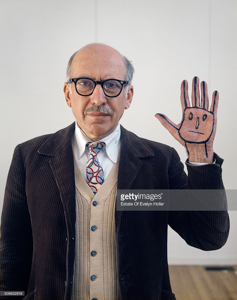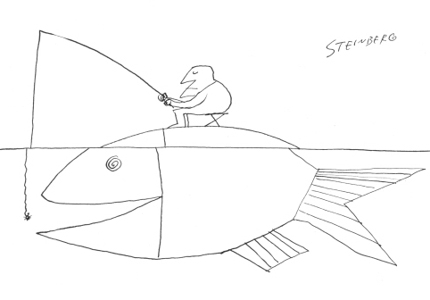Saul Steinberg (1914, 1999)
Jewish Romanian Cartooist and Artist


Steinberg was born in Romania but in 1936 left for Milan to study architecture. In 1940 the Fascist Anti-Semitic laws were passed, and Steinberg left for America. Within a year he was sponsored in the U.S. by The New Yorker magazine.
Steinberg remained loyal to the New Yorker, submitting cartoons up until his death. However, Steinberg’s work transcends mere cartooning and reaches the level of fine art. In fact, he was able to exhibit his work in numerous high end venues: “Fourteen Americans” at the MOMA with Gorky, Motherwell, and Naguchi and a retrospective at the Whitney in 1978.
Horst had two of Saul Steinberg’s books of cartoons and drawings, which he enjoyed immensely. He took inspiration from Steinberg’s unabashed humor, use of different style and techniques to convey mood and personality. He also had an astonishing ability to communicate purely visually: to communicate words without words. In fact, I don't think he ever required a caption. The cartoon above manages to make a serious point about human nature while still being funny.
A lot of fine art tends to take itself very seriously; so, if you allow too much humor into your work, you risk being labeled a non-serious artist. Steinberg was able to transcend labels like humorist, cartoonist and illustrator, probably because everyone in New York knew who he was. I think Steinberg showed Horst he didn't have to suppress his humor, not that he would have anyway.
Steinberg was an astute observer of human foibles and depicting them mostly sympathetically. However, he routinely took sniper shots at vanity, conformity, authoritarianism and hubris. And while he would also satirize patriotism and politics, apart from a few anti-nazi cartoons, his work was not overtly political.
Like Horst, Steinberg returned to themes, but never repeated himself, and there is always a European flavor to their work.